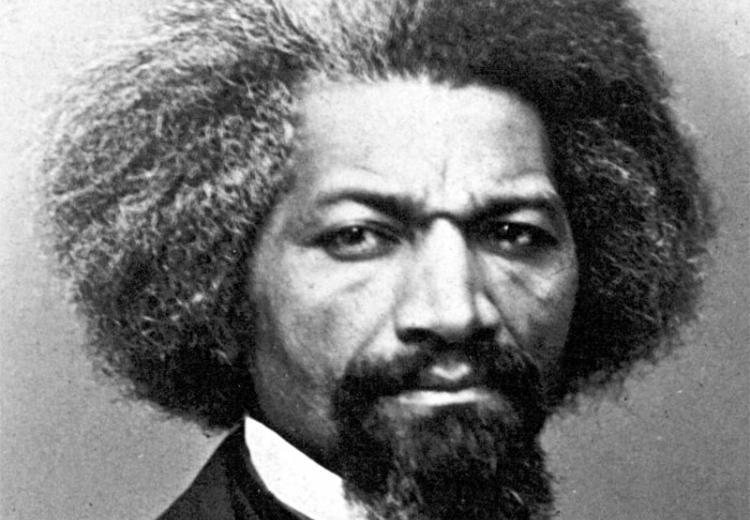From Courage to Freedom: Frederick Douglass's 1845 Autobiography

Frederick Douglass, circa 1860s.
In 1845 Frederick Douglass published what was to be the first of his three autobiographies: the Narrative of the Life of Frederick Douglass, an American Slave, Written by Himself. As the title suggests, Douglass wished not only to highlight the irony that a land founded on freedom would permit slavery to exist within its midst, but also to establish that he, an American slave with no formal education, was the sole author of the work. Written in the years following his 1838 escape from his Maryland slaveholder, the narrative reveals numerous instances of Douglass's courage on his journey from slave to free man. Douglass himself punctuates this route by sharing with the reader his tenacious and ingenious efforts at learning how to read and write, his risky physical opposition to a "n-breaker," and his escape to New York. These courageous acts pale, however, beside his most overt and possibly dangerous act: the publishing of his autobiography before his freedom had been purchased. Indeed, in 1845 Douglass was still legally a slave; at any time he could have been betrayed, hunted down, captured and returned to his master who, more than likely, would have sold Douglass further down South as punishment. It was not until 1847, while Douglass was traveling and lecturing in England that friends bought his freedom. For Douglass, however, his personal declaration of freedom and independence occurred two years earlier with his Narrative.
In this curriculum unit, students will read Douglass's narrative with particular attention devoted to chapters 1, 2, 6, 7, 9, and 10. They will analyze Douglass's vivid first-hand accounts of the lives of slaves and the behavior of slave owners to see how he successfully contrasts reality with romanticism and powerfully uses imagery, irony, connotative and denotative language, strong active verbs, repetition, and rhetorical appeals to persuade the reader of slavery's evil. Students will also identify and discuss Douglass's acts of physical and intellectual courage on his journey towards freedom.
Guiding Questions
What does Frederick Douglass's life illustrate about the United States in the 19th century?
What does Douglass's narrative reveal about how slavery affects slaveholders and supporters of slavery?
What about the autobiography of Frederick Douglass remains important to our understanding of history?
Learning Objectives
Examine Douglass's use of imagery, irony, and rhetorical appeals in the telling of his experiences and observations.
Evaluate the extent to which a slave narrative is a reflection of reality and romanticized myth.
Analyze the historical circumstances of Douglass's escape and contrast his experiences as a free man with others in the North.
Evaluate Douglass' place within the abolitionist, suffrage, and civil rights movements across U.S. history.
